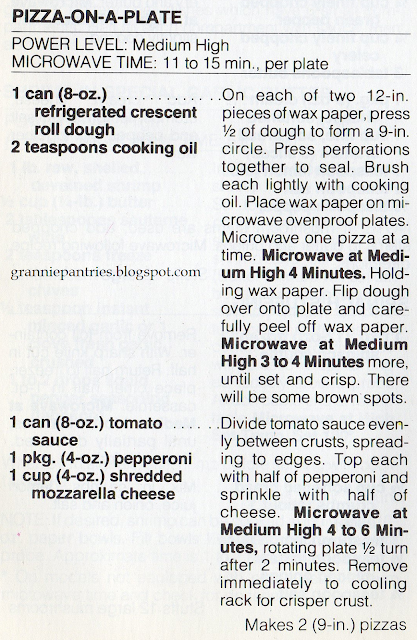Guess which American city has its bicentennial this year! Okay, to be fair, there's more than one, but I only have the 50-year-old sesquicentennial cookbook for one city, so you better guess that one.
Yes, it's Sesqui-Samplings: 150 Years of Cooking in Indianapolis (Indianapolis Sesquicentennial Commission, 1971). I've got to admit that I love that clunky title.
Rather than being arranged by type of food (appetizers, meat, poultry, etc.), this initially arranges recipes by time ("A Taste of the Past," with modernized versions of historical recipes and "What's Cooking Today in Indianapolis"). Then it gives up on the time theme and has a chapter of recipes from the cookbook committee ("The Committee Cooks").
The earliest recipes are supposedly from descendants of two of the earliest Indianapolis settlers.
I always thought of hoecakes as a southern thing, but they must have been common in early Indiana too.
Apparently, early Indianapolis residents mostly had cornmeal on hand.
Notes in the margins also tell the tale of early Indianapolis life, and the corn was a source of amusement as well as cornmeal.
I'm sure it was great fun for the young women to simultaneously work and worry about having kisses foisted upon them by one or more of the young men present. At least Indianapolis was so thinly populated back then that the number of kisses should have been pretty limited....
The book also has recipes for local foods, like the persimmons featured in the (maybe) title of another Indiana cookbook.
I love the simple drawing to go with this one, and the tan pages with pops of orange illustration seem so '70s!
The historical section ends with recipes from rationing in World War II, like this Top-of-the-Stove Meatloaf loaded up with veggies and cracker crumbs to make the ground beef stretch further.
Plus, it came with another great drawing, this time of a woman weighing out her ground beef purchase to make sure sit will fit her ration budget.
There's something about her lips that makes me think she started putting on clown makeup and then changed her mind when she remembered she was just going to grocery, but she didn't have time to remove it and start over...
So what were Indianapolites cooking up in the early 1970s? According to the "What's Cooking Today in Indianapolis" chapter, they were making Bacon Bits. If you wonder why they needed a recipe to cook bacon until crisp and then crumble it, then you obviously don't know what bacon bits are.
They're slices of bread spread with cream of mushroom soup, rolled up, wrapped in bacon, and baked until the smell of the bacon is strong enough hide the fact that you're about to bite into a chunk of bread spread with cream of mushroom soup until it's too late.
Of course, the Indianapolitans were also in on the disgusting jellied salad craze.
I'll bet that broccoli and hard-cooked eggs trapped in a gelatinized consommé and mayonnaise blob smelled just lovely. (At least it's plain gelatin and not lemon or lime!)
I was surprised to learn that Naptowners also made a bastardized version of Cincinnati chili.
On the plus side, it's got no cinnamon. On the minus side, the spaghetti is at least partially cooked in the sauce-- for 45 minutes, and that's after the initial pre-boil, so it's sure to be mushy!
And finally, what were the committee members serving up at their own functions? I was not surprised to see a committee member recommend having a luau-themed party, but I was shocked at her recipe.
I thought pineapple was absolutely an obligatory component of the main dish for mid-20th-century "luau" menus, but Sweet Pork and Walnuts just gets its sweet from brown sugar-- no pineapple! I guess those Indianapoleons were just a little bit different from their other midwestern counterparts.
Happy bicentennial, Indianapolis! Thanks for the fun cookbook, but don't feel compelled to make me anything. And no, I have never shucked an ear of red corn, so stay on your own side of the barn.




















































